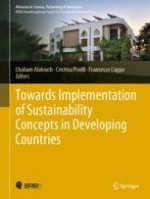2021 | OriginalPaper | Buchkapitel
Evolution of Optimum Landfill Site for Disposal of Solid Waste Through Geoinformatics: A Case Study of Ahmedabad City
verfasst von : Zalak Bhavsar, Gaurav Jain
Erschienen in: Towards Implementation of Sustainability Concepts in Developing Countries
Aktivieren Sie unsere intelligente Suche, um passende Fachinhalte oder Patente zu finden.
Wählen Sie Textabschnitte aus um mit Künstlicher Intelligenz passenden Patente zu finden. powered by
Markieren Sie Textabschnitte, um KI-gestützt weitere passende Inhalte zu finden. powered by
